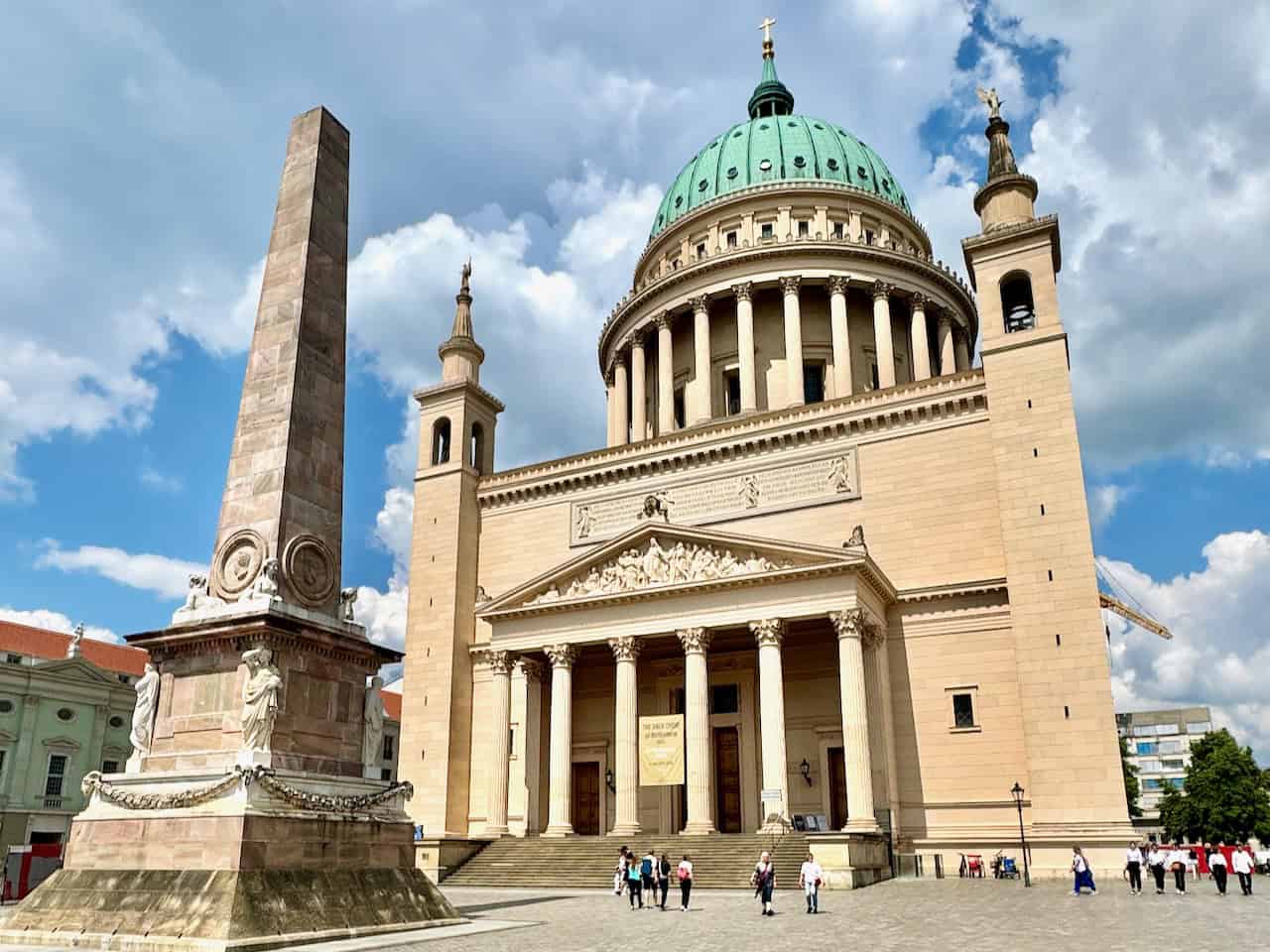
Potsdam, a city steeped in history, is located a half-hour by train southwest of Berlin. The capital of the German state of Brandenburg, it has played a crucial role in shaping European history. These days, it’s most famous for its lavish 18th century palaces and gardens. I visited the Sanssouci Palace and its gardens some time ago, so on a recent trip to Berlin, I decided to take the train to Potsdam and spend a day exploring the Innenstadt (city centre) instead. I discovered a city centre with broad avenues, stately buildings and leafy parks. There are lots of things to see in Potsdam – my self-guided walking route below covers the top sights in the old town.
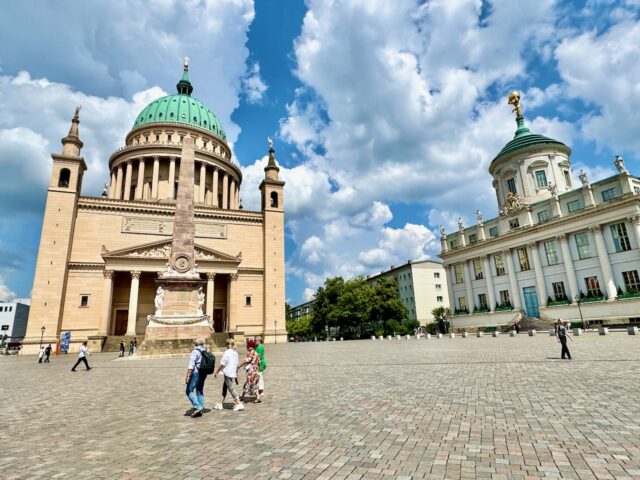 Alter Markt Potsdam
Alter Markt Potsdam

A brief history of Potsdam
Potsdam’s history dates back to the early Middle Ages, first mentioned in 993 as a small Slavic settlement. However, its transformation into the city we know today began in the 17th century under Frederick William, the “Great Elector” of Brandenburg. In the 18th century, Frederick the Great made Potsdam his residence, turning it into a centre of military, cultural, and architectural innovation.
During the era of Prussian rule, Potsdam became known for its palaces and grand buildings, with the Sanssouci Palace standing as the city’s crowning achievement. The city played a significant role in European affairs. Even after Prussian rule ended in the early 20th century, Potsdam continued to be a city of historical importance. It gained worldwide recognition in 1945 as the site of the Potsdam Conference, where the Allied leaders met to determine post-war Europe.
With its beautiful architecture, world-class museums and vibrant districts, a walk through Potsdam offers a glimpse into the past while enjoying the charm of the present. Let’s embark on a self-guided walking tour through the heart of Potsdam, exploring its key landmarks.
In the map above, you’ll find my self-guided walking route through the Innenstadt (Inner City or Old Town). The purple pins denote places of interest in the city centre. I’ve also included other famous Potsdam attractions (orange pins) located outside the city centre. This self-guided walking tour starts and ends at Potsdam Hauptbahnhof (central station), making it ideal for those visiting by train as a day trip from Berlin. Berlin Hbf (central station) is a 35-minute train ride away. It can comfortably be done in a day, including a visit to the Sanssouci Palace and Gardens.
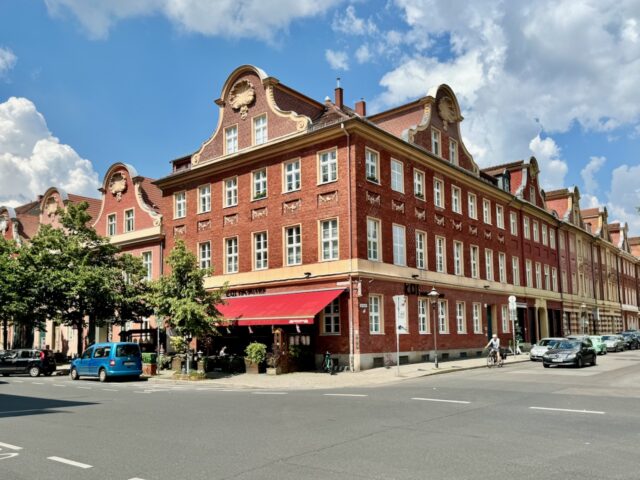 Beautiful architecture in Potsdam
Beautiful architecture in Potsdam
Alter Markt (Old Market Square)
From the central station, I crossed the Lange Brücke (Lange bridge) and walked to the Alter Markt or Old Market Square, the historic heart of Potsdam. This grand square reflects the city’s baroque heritage and has undergone several transformations over the centuries. Dominating the square is the towering Nikolaikirche (St. Nicholas’ Church), an impressive neoclassical building designed by Karl Friedrich Schinkel and completed in 1850. Its massive dome and elegant proportions make it a key landmark in the city centre. You can climb the dome for panoramic views of the city. In the centre of the square stands the Obelisk, erected in 1753 to commemorate the city’s builders and architects.
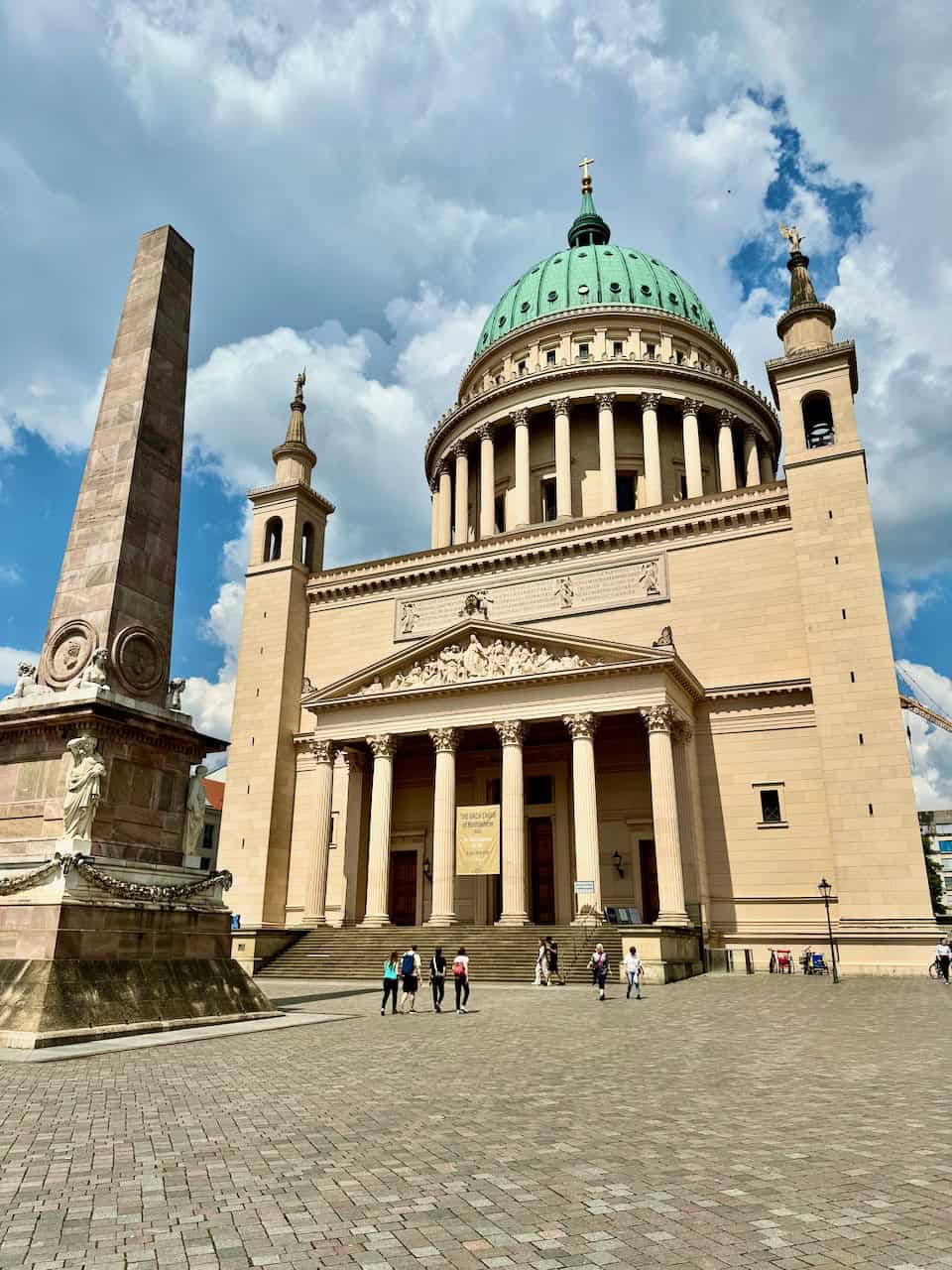 St. Nicholas Church and the Obelisk
St. Nicholas Church and the Obelisk
Museum Barberini
Located just off the Old Market Square is the Museum Barberini, a world-class art museum housed in a reconstruction of the Barberini Palace. The original palace was destroyed during World War II, but it was rebuilt in 2016 based on historical plans. The museum now hosts rotating exhibitions featuring everything from impressionist masterpieces to contemporary art, providing a cultural highlight in your walk.
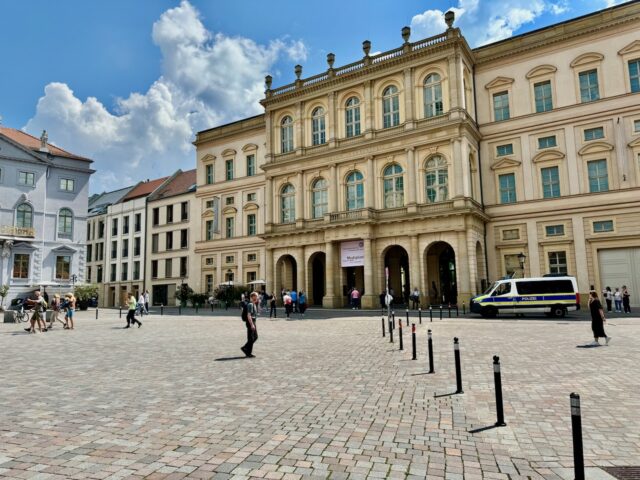 Museum Barberini
Museum Barberini
St. Peter & Paul Church
From the Alter Markt, I continued my Potsdam sightseeing walk to the St. Peter & Paul Church, completed in 1870. It stands at the end of the Brandenburgerstrasse (street), the other end of which stands the city’s Brandenburger Gate.
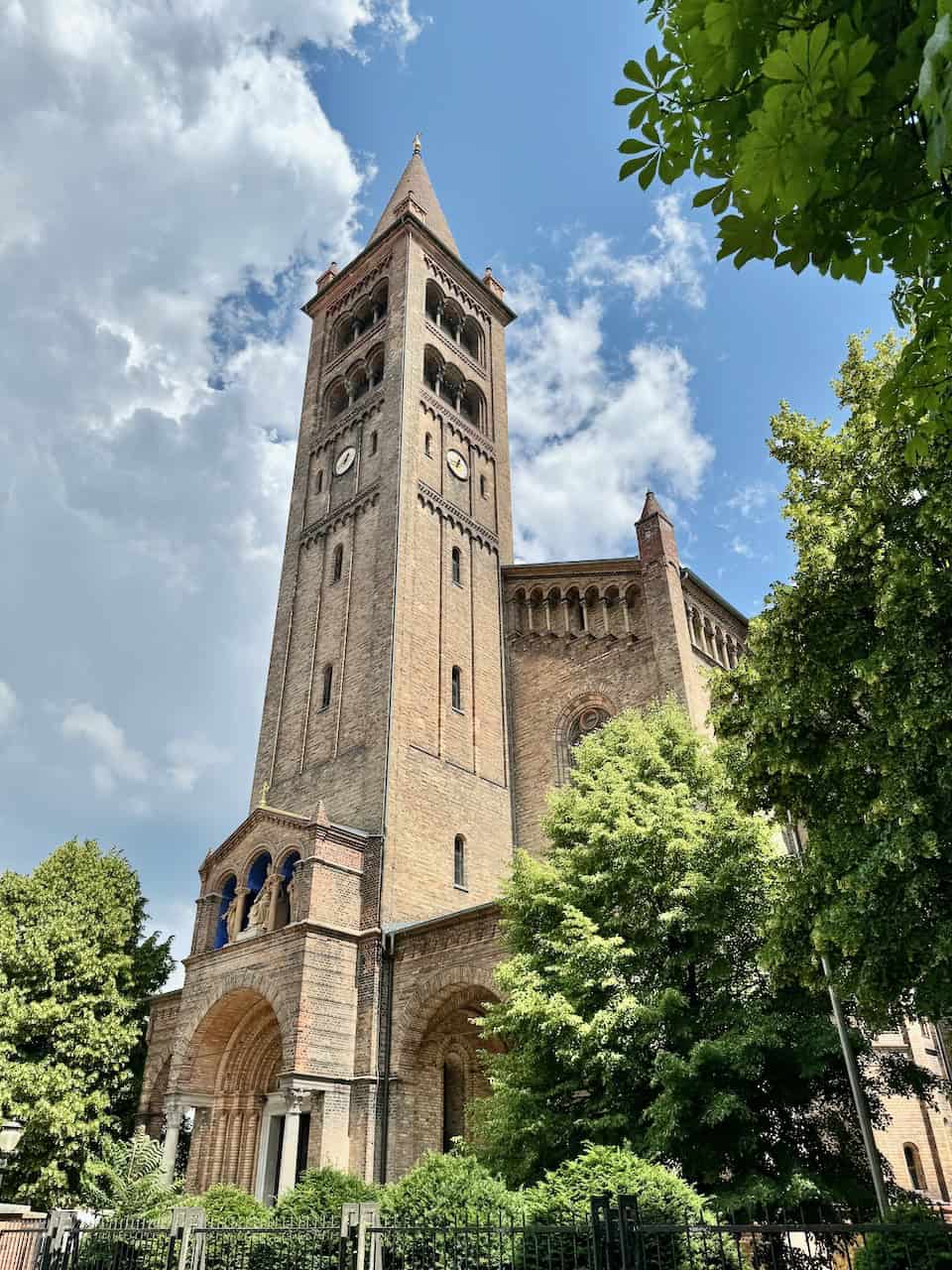 St. Peter & Paul Church
St. Peter & Paul Church
Dutch Quarter (Holländisches Viertel)
A short stroll away lies the Holländisches Viertel (Dutch Quarter), a unique architectural feature of Potsdam. This district features over 150 houses in the Dutch style and is one of Potsdam’s most charming and lively neighbourhoods.
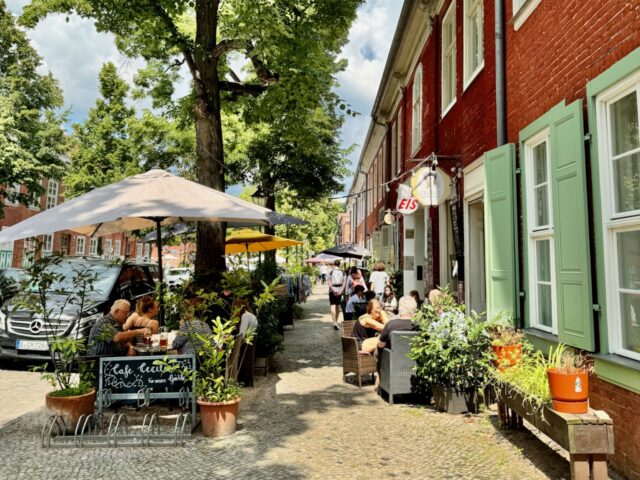 The Dutch Quarter is packed with restaurants, cafés and boutiques.
The Dutch Quarter is packed with restaurants, cafés and boutiques.
Built between 1733 and 1742, the quarter was designed by the Dutch architect Jan Bouman. It was intended to house Dutch artisans invited by Frederick William I. Today, the cobblestone streets of the Dutch Quarter are lined with quaint cafés, boutiques, and galleries, making it a perfect spot for a coffee break, a meal or souvenir shopping. I stopped for lunch at Zum Vliegende Holländer, a lovely restaurant with a shady terrace.
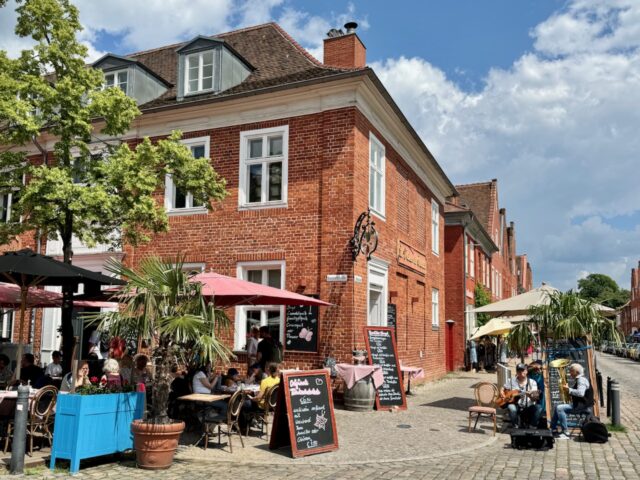 Stop for a drink or meal in the Dutch Quarter.
Stop for a drink or meal in the Dutch Quarter.
After lunch, I explored the Dutch Quarter, with its numerous shops and cafés. I especially loved the Dutch-style houses along Mittelstrasse.
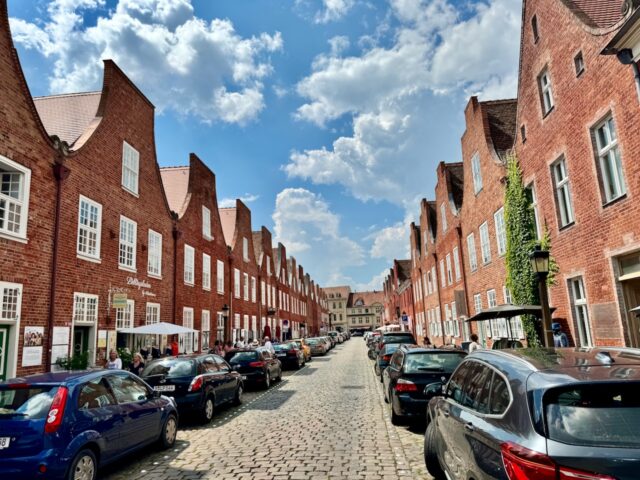 Dutch-inspired architecture in Potsdam
Dutch-inspired architecture in Potsdam
Nauener Gate (Nauener Tor)
I visited the Nauener Tor, one of the three preserved city gates of Potsdam. Built in 1755, this neo-Gothic gate is one of the oldest examples of Gothic Revival architecture in Europe.
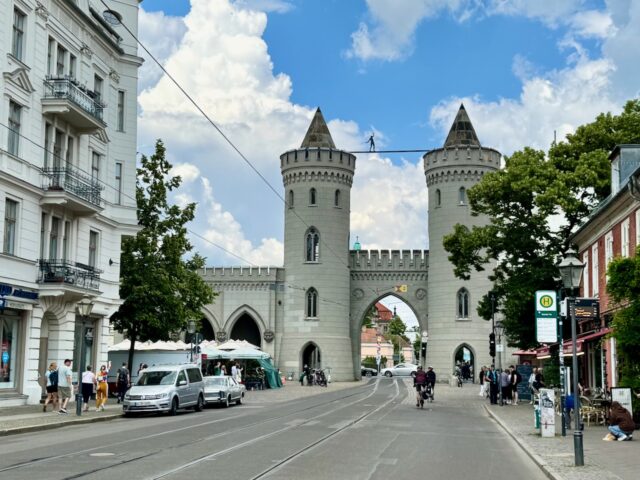 Nauener Tor
Nauener Tor
Sanssouci Palace and Park
Though slightly outside the immediate historic centre, no visit to Potsdam is complete without a detour to Sanssouci Palace and Park. Just a 20+ minute walk from the Nauener Tor, this sprawling UNESCO World Heritage Site is home to the famed Sanssouci Palace, the summer retreat of Frederick the Great. The palace, often referred to as the “Prussian Versailles”, is a masterpiece of rococo architecture, with its signature terraces leading up to the grand building.
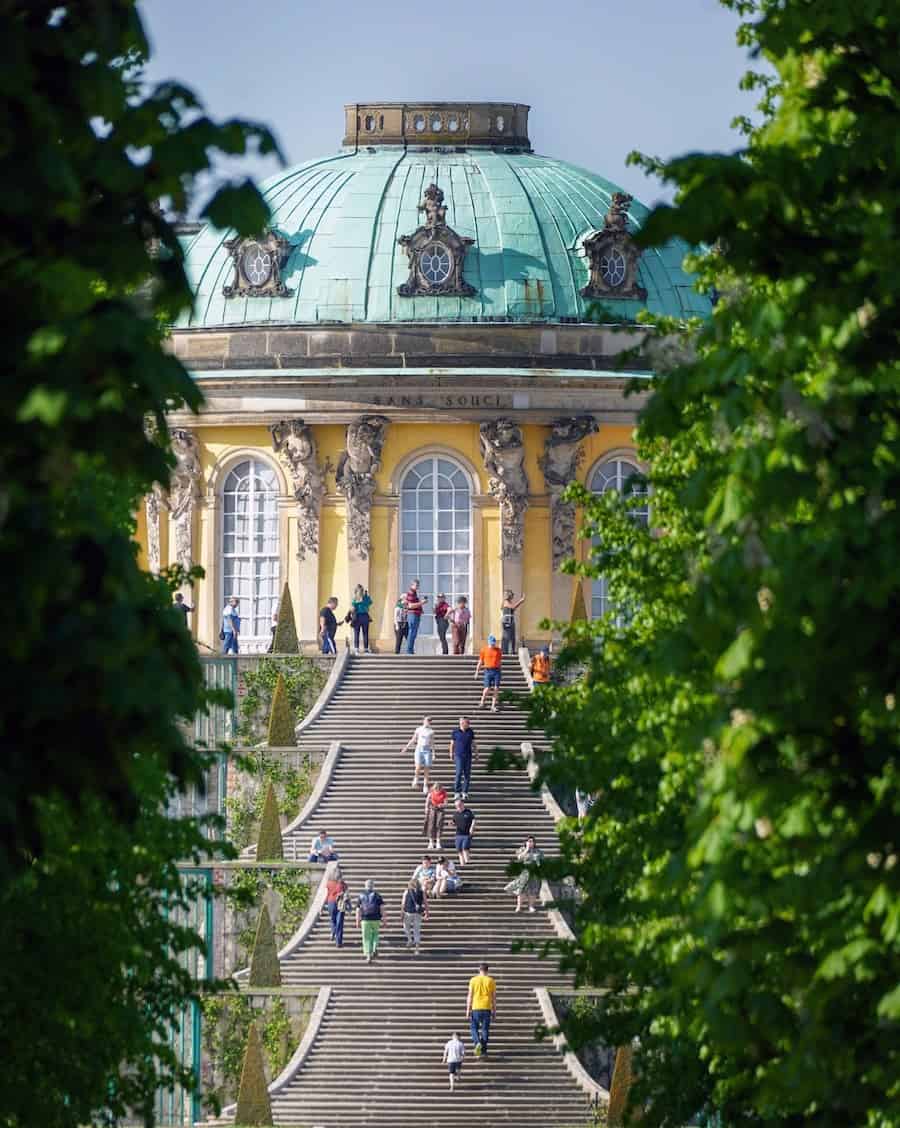 Sanssouci Palace (image by Prymak/Unsplash)
Sanssouci Palace (image by Prymak/Unsplash)
The park itself is a lush haven of landscaped gardens, fountains and additional structures such as the Chinese House, New Palace and Orangery Palace. Whether you’re interested in architecture, history, or simply enjoying nature, Sanssouci offers something for everyone.
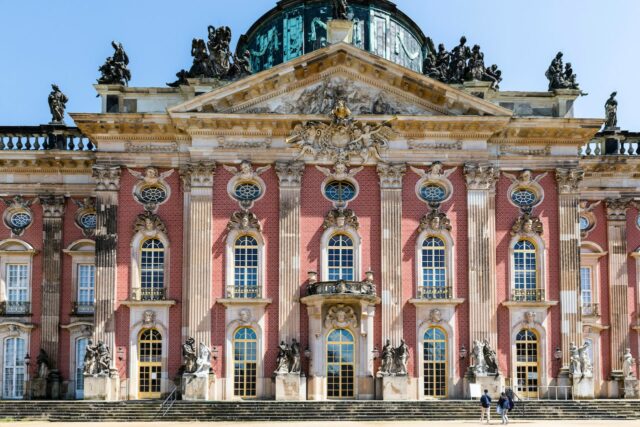 Neues Palais or New Palace (image by W.Weiser/Unsplash)
Neues Palais or New Palace (image by W.Weiser/Unsplash)
Brandenburg Gate (Brandenburger Tor)
Further along my walk, I passed the Brandenburger Tor, not to be confused with Berlin’s iconic Brandenburg Gate. Potsdam’s Brandenburger Tor was built in 1770 and is a fine example of Prussian neoclassical architecture. Its twin towers and classical columns evoke the Roman triumphal arches, symbolising the might of the Prussian state. From the gate, I continued my walk along the vibrant Brandenburgerstrasse shopping street.
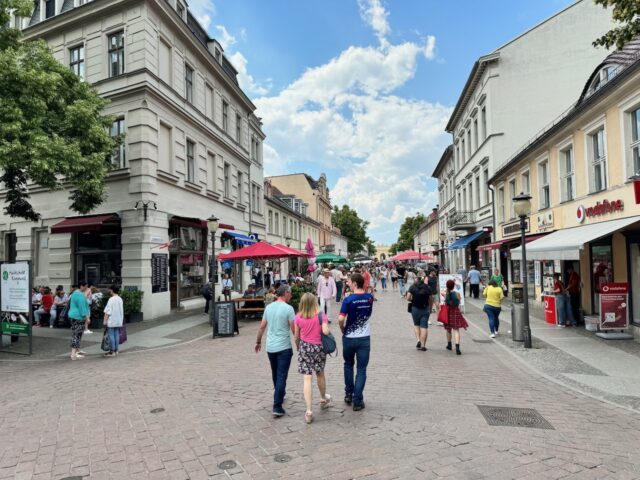 Brandenburgerstrasse with the Brandenburger Tor at the far end.
Brandenburgerstrasse with the Brandenburger Tor at the far end.
City Palace (Stadtschloss)
My next stop was the Stadtschloss, which was once the royal residence of the Prussian kings. While the original palace was largely destroyed in World War II, the exterior was reconstructed in the early 21st century, and today it houses the Brandenburg Parliament. Its grand façade, with Corinthian columns and intricate sculptures, serves as a reminder of Potsdam’s royal past. I stopped to admire the Ringer colonnade and the golden angels of the Angel Staircase on the side of the palace.
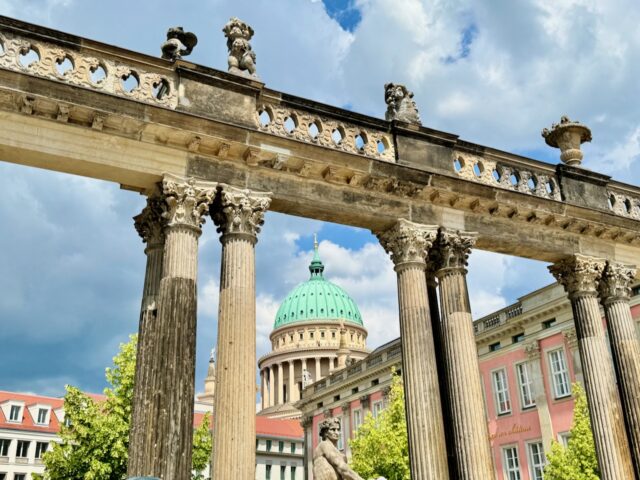 Ringer colonnade
Ringer colonnade 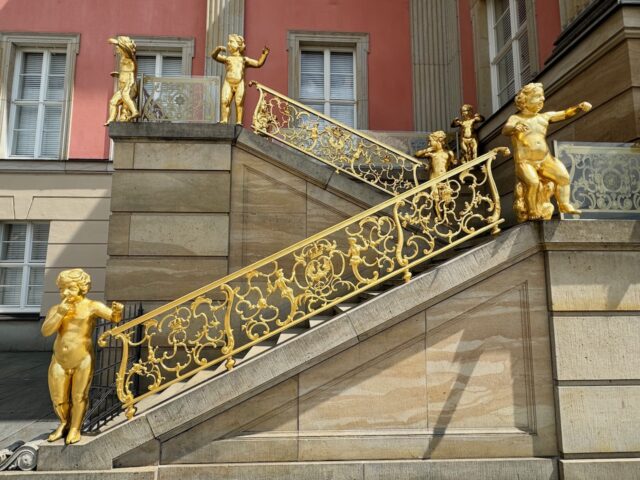 The beautiful Angel Staircase
The beautiful Angel Staircase
From here, I made my way back to the central station and took the train back to Berlin.
Attractions in Potsdam outside the city centre
To enjoy these attractions, I recommend spending a night or two in the city. This will also give you more time to enjoy the numerous palaces and gardens. Search for accommodations in Potsdam (Booking.com).
In addition to the attractions located along this walking route, I also recommend visiting the following attractions on the edges of the city centre:
Cecilienhof Palace (Schloss Cecilienhof)
Cecilienhof Palace was built between 1914 and 1917 in an English Tudor style in the expansive Neuergarten (New Garden). The palace is well known as the venue of the Potsdam Conference in 1945. During this conference, the United States, United Kingdom and the Soviet Union came to an agreement which shaped the future of post-war Europe and Asia.
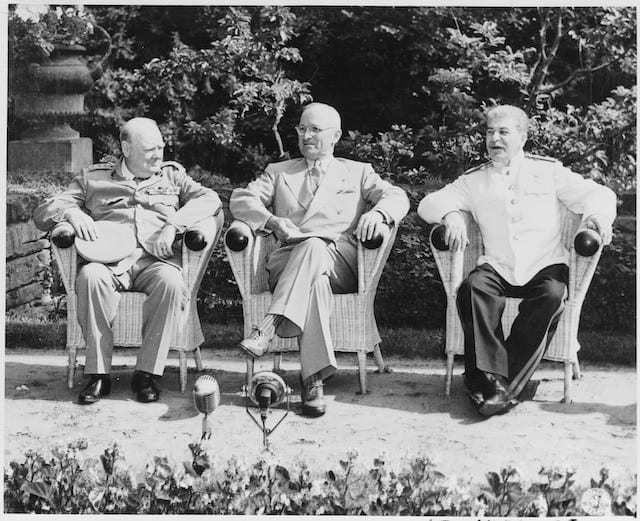 Potsdam Conference: Churchill, Truman and Stalin in the Cecilienhof garden, 25 July 1945 (image via Wikimedia
Potsdam Conference: Churchill, Truman and Stalin in the Cecilienhof garden, 25 July 1945 (image via Wikimedia
I also recommend walking around the Neuergarten. Here you’ll discover more historic and architectural highlights such as the 18th century, neo-Classical Marmorpalais (Marble Palace) and the Orangerie.
Glienicke Brücke (Glienicke Bridge)
Glienicke Bridge became famous during the Cold War as the “Bridge of Spies,” where East and West exchanged captured agents. Its history adds a modern layer to Potsdam’s rich past, bridging the city’s royal legacy with its role in 20th-century geopolitics.
Schloss Charlottenhof (Charlottenhof Palace)
The former summer residence of Crown Prince Frederick William, Charlottenhof Palace is an 18th century neo-Classical palace at the edge of the Sanssouci Park.
Booking.com
A walk around the historic centre of Potsdam is a journey through centuries of European history. From baroque splendor to Cold War intrigue, the city offers a wealth of landmarks that bring its past to life. Whether you’re wandering the quaint streets of the Dutch Quarter or marvelling at the grandeur of Sanssouci Palace, I hope my self-guided walking tour of Potsdam helps you to explore and enjoy the city’s timeless beauty.
Read more about Germany on Velvet Escape
Please visit:
Our Sponsor
